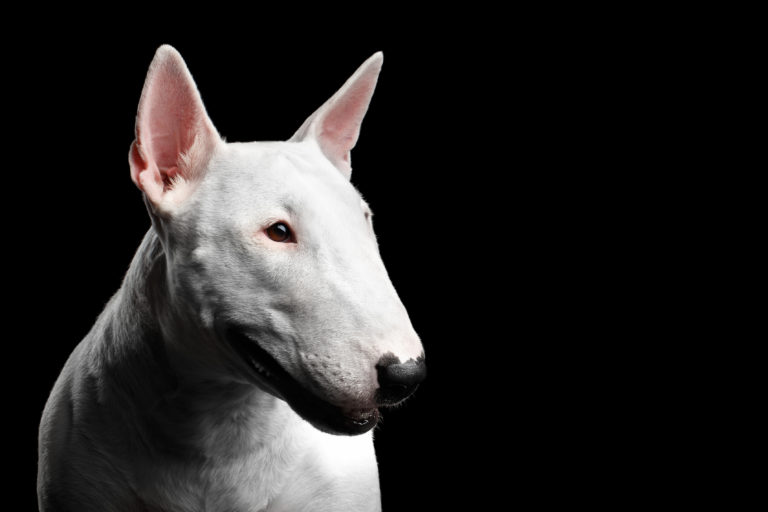With its egg-shaped head, crooked nose, and slit-eyes, the Bull Terrier has a bit of a marmite appeal. Fans of the breed can’t get enough of those quirky looks.
Its downward sloping head is part of the present-day image of the breed. The so-called “Roman nose” came about in the 1950s thanks to British breeder Raymond Oppenheimer. In addition, ears should be small, upright and close together.
The Bull Terrier’s appearance has evolved over the course of its breeding history. For instance, not only the head but the size and colour have undergone changes in the breed standard.
In the early days of the breed, there was a lot of size variation. But nowadays dogs less than 35.5cm high belong to the Miniature Bull Terrier breed.
Most modern examples of the breed will reach between 40 and 55cm in height. However, there are no height or weight limits in the breed standard, so long as the dog is in proportion.
Bullies are well-known for being muscular little powerhouses, but mobility and speed are also important traits.
From 1933, the British Kennel Club began to recognize coloured examples of the Bull Terrier. Most new colours were a result of crossing Bullies with Staffordshire Bull Terriers.
Modern can come with black, blotched, red, fawn and tricolour fur. Spots on the head are fine but blue fur is not allowed.
The Bull Terrier’s shiny fur is short, flat and hard to the touch. Some dogs will grow a soft undercoat in winter for added warmth.
